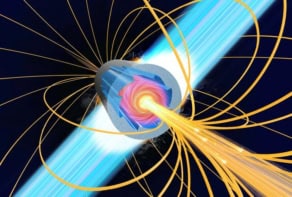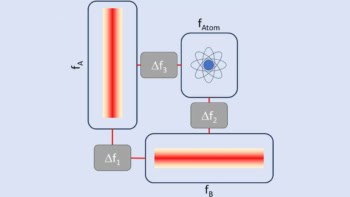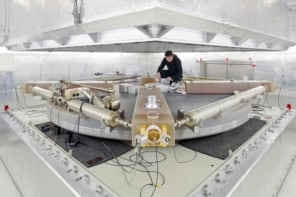The intensity of galactic cosmic rays measured on Earth is related to the Sun's cycle of activity, which is well known by astronomers. The solar magnetic field flips every 11 years and the number of sunspots and 'coronal mass ejections' rises and falls twice in each complete 22-year cycle. The cosmic ray intensity on Earth also peaks twice every 22 years in time with the solar cycle. Now two US astronomers have discovered a quirk in this pattern - and they believe that coronal mass ejections could be to blame (E W Cliver and A G Ling 2001 Astrophys. J. Lett. 551 L189).
Edward Cliver, of the Air Force Research Laboratory in Massachusetts, and Alan Ling, of Redex Inc in Massachusetts, compared numbers of sunspots – dark patches on the disk of the sun caused by local magnetic fields – and measurements of galactic cosmic rays dating back to 1951. The sharp fall in cosmic ray intensity that occurs every 11-years is closely related to the rise in the number of sunspots. “We were studying this relationship when we noticed that the cosmic ray curve lagged behind the rise in the number of sunspots by about a year – but only during alternate solar cycles”, Cliver told PhysicsWeb. In the intervening cycles, the two trends occur almost simultaneously.
The researchers suspect that the alternating pattern is rooted in the reversal of the Sun’s magnetic field every 11 years. Cosmic rays preferentially approach the Sun from the direction of its poles when the magnetic field lines are pointing out of the Northern hemisphere. When the magnetic field flips, cosmic rays tend to approach equatorial regions of the Sun. But astronomers also know that coronal mass ejections (CMEs) – colossal streams of gas that erupt from the Sun’s surface – tend to occur close to the Sun’s equator early in the solar cycle, and later migrate towards the poles.
Cliver and Ling propose that when cosmic rays impinge on the solar poles early in an 11-year cycle, they do not encounter CMEs. But cosmic rays do meet CMEs when they approach the equator at this time in the solar cycle. This means that the interaction of cosmic rays with the strong magnetic fields of CMEs affects the intensity of cosmic rays on Earth. “This would account for the systematic lag we observed”, says Cliver.
There are many uncertainties inherent in predicting long-term trends from relatively short-term measurements, as Cliver and Ling point out. But the pattern is clearly evident from the data so far.



